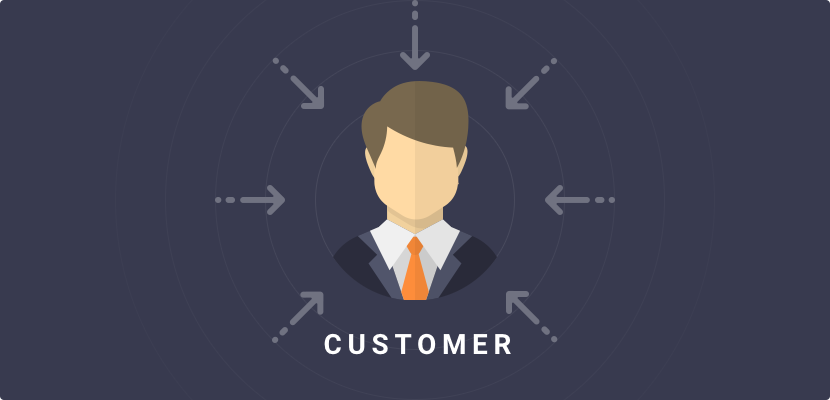Your business is built on the success of your customers. Using your service successfully will lead to renewals and upsell opportunities. To ensure your customers’ success, you need a team that’s focused on walking them through their journey with your product. A customer success team proactively communicates with your customers. They provide support, education, and tips for enhancing each customer’s experience. For your customers to have an awesome experience with your service, you need to build an awesome customer success team. Here are five steps for doing exactly that:
Step 1: Hire the Right People
Building an awesome customer success team starts with, well, building your team. You need to hire the right people. Your team members should have technical knowledge combined with the ability to empathize and work with your customers.
To start, look at the background of your candidates. Do they have the technical background you’re looking for? If they do, do they have experience sharing that technical expertise with people who don’t have the same technical know-how? Once you’ve narrowed down your candidates, ask probing interview questions to get a sense of how they’ll handle customer challenges.

One of the best ways to get a sense of how they’ll work with customers is by providing them with hypothetical situations. Ideally, these are real situations your company has run into. Ask them how they would respond, how they would follow-up, and how they know when the customer has been successful. Look for people who respond with empathy and ensure their customer is on the right path.
Step 2: Onboarding
The next step is onboarding your new hires. Your customer success team needs to be fully versed in both the customer experience and the ins and outs of your product or service. This means you need to have a full understanding of your customer’s journey and the challenges they face along the way.
If you haven’t already, map out your customer’s journey from initial use to full implementation to renewal. What are some of the pitfalls and challenges they face along the way? You should also have a clear sense of who your customers are. You may want to segment different customer types and assign them to different team members who can cater to their specific needs.
Plan and implement a training program for your new hires. This should include making sure they fully understand who your customer is and how they interact with your product or service. They should also know whom they’d be interacting with in other departments, from sales to engineering. Ensuring your customers’ success will go beyond your team – you’ll need buy-in from every department in order to solve problems.
Step 3: Empower the Customer
If your customer runs into a challenge, you want to be there for them. This can be time-consuming for both your team and your customer, though. Part of your customer success team’s strategy should be providing resources that allow your customer to solve their own problems in a way that feels empowering.
Review common issues and challenges your customers have when using your service. Designate team members to develop resources to address these challenges. Quick video tutorials and a searchable knowledge base are great places to start. Once you’ve developed resources, be proactive about connecting your customers with the resources. You may want to set up automated emails that address specific customer milestones. When a customer onboards with your service, for example, they could receive an automated email with a “Get Started” video and links to your knowledge base. This helps ensure they get started successfully.
Of course, when a customer does reach out, your team should strive to respond as quickly as possible. Everyone wants their problems solved yesterday, so the sooner you can tackle each issue, the better.

Step 4: Accountability
Decide on the Key Performance Indicators, or KPIs, that are critical for measuring your team’s performance. These may include renewals, churn, and the results of customer satisfaction surveys.
You may want to send customer surveys out at key milestones along your customer’s journey. A couple simple questions to ask are “How satisfied with the support you received from our team?” and “How likely would you be to recommend XYZ to a colleague or friend?” Follow-up with an open-ended question such as “What is the main reason for your score?” Although text responses take more time to review, they can provide valuable insight into your customer’s experience. This also gives your team the opportunity to reach out to those with negative responses to dig deeper into their experience.
You may also want to track user metrics. If users are becoming disengaged, it’s an opportunity to reach out and see how your team can help get them back on track. On the flip side, you can also reach out to power users for upgrades or upsells to enhance their experience. You may also want to survey customers who churn. Getting feedback from customers who have left might be painful, but it’s important to know the reasons behind why they abandoned ship.
Keep your team informed of your KPIs. This helps keep everyone working on the same goals. Rather than just emailing out results, periodically take time to discuss your KPIs and strategies to improve them.
Step 5: Empower Your Team
Your training gives your team the knowledge they need to ensure your customer’s success. Your team also needs to be able to make decisions to enhance your customer’s experience. This might include flexibility in pricing or the ability to give free renewal periods or upgrades.
Your entire company needs to be onboard with empowering your customer success team. Your team represents the voice of the customer. They are the ones in touch with their needs and challenges. Your team will need to coordinate with other departments to solve problems. If your company isn’t on board, your customers may receive a delayed, disjointed experience. If everyone is on board, though, ensuring your customer’s success should be seamless.




